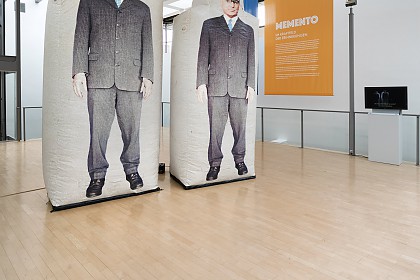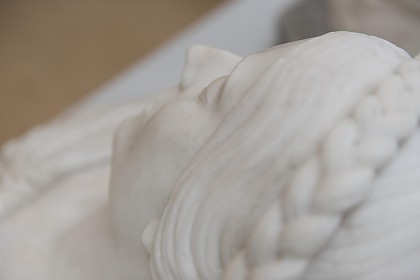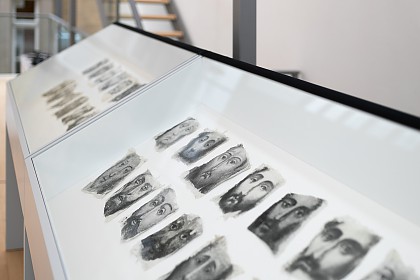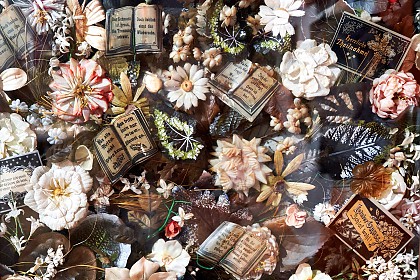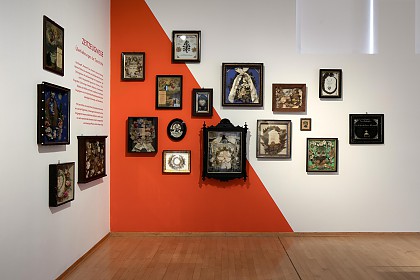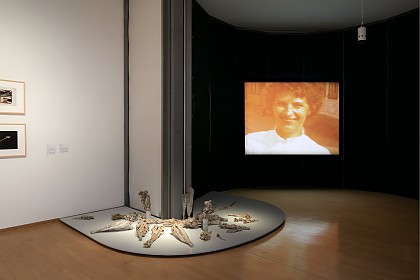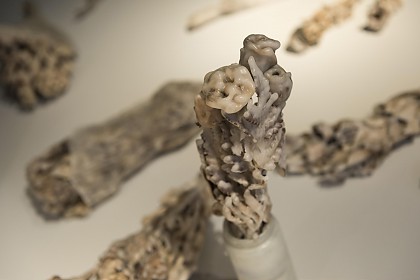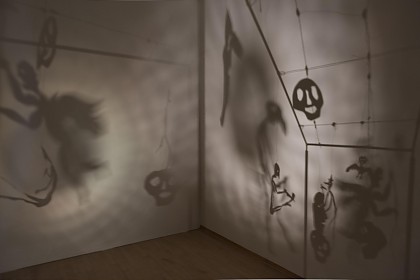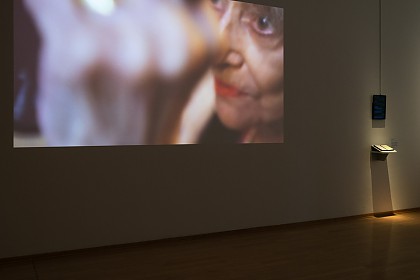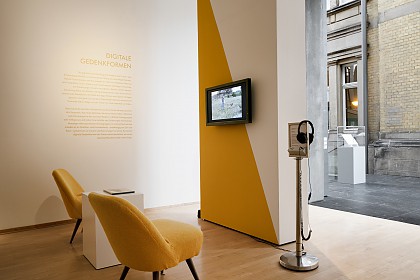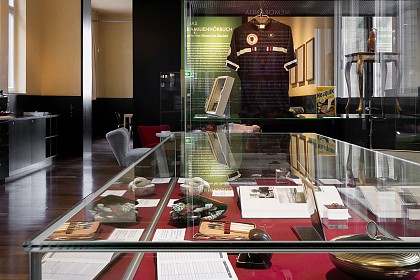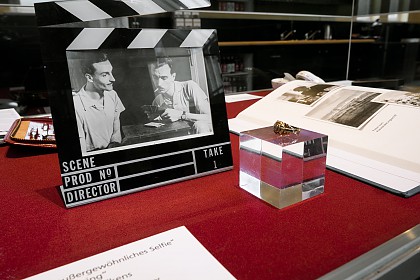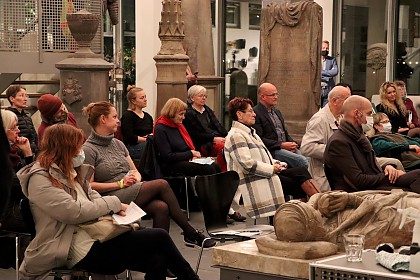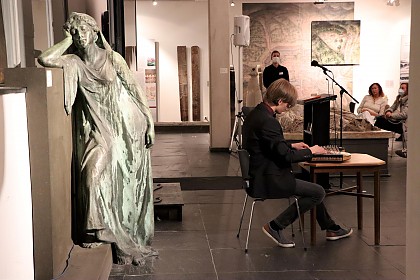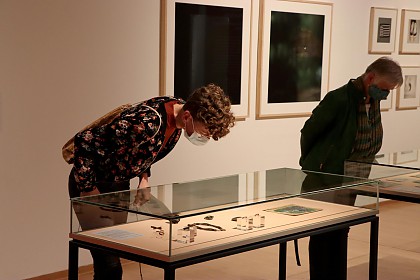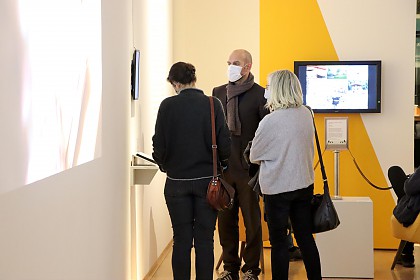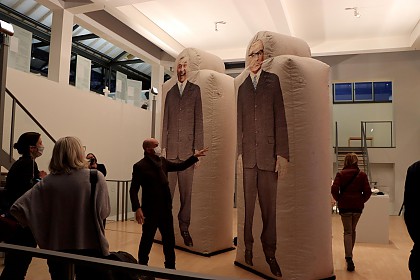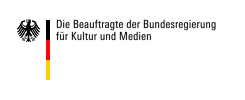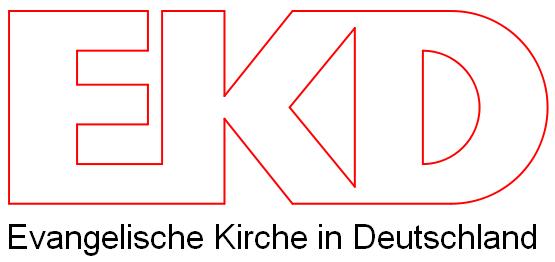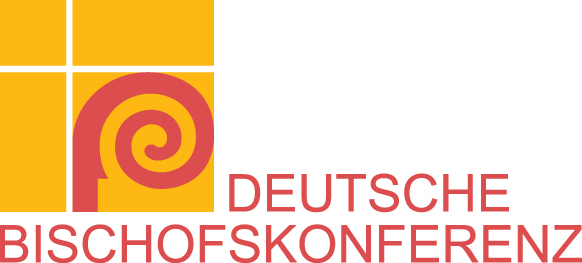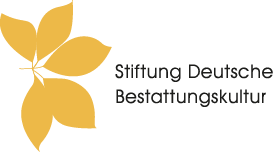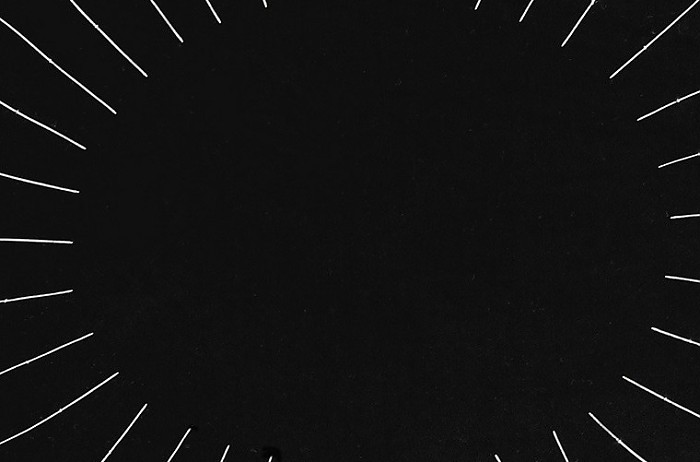

17. October 2020 – 30. May 2021
MEMENTO
The Force Field of Memories
An exhibition on individual forms of remembering and commemoration
The Museum for Sepulchral Culture, Kassel dedicates the exhibition MEMENTO – The Force Field of Memories to individual forms of remembrance and commemoration through a selection of international contemporary artworks and cultural-historical testimonies. The title refers to the simultaneously attractive and repellent effect of memories of people and experiences that have been lost to the current of time. The attraction of thoughts of the past and of images of memory, which, due to their painful psychological and emotional potentials, can often be accompanied by inner defence mechanisms, makes people leave their present – the here and now. This can be an escape from current situations in life, but in the context of grief work it can offer the key to returning to a conscious and present life after experiencing a severe loss.
Following the exhibition LAMENTO – Mourning and Tears (11/2019 – 03/2020), which explored the phenomenon of crying and the immediate affects and emotions triggered by the death of a close person, at the Museum of Sepulchral Culture, Kassel, the exhibition MEMENTO – The Force Field of Memories (10/2020 – 02/2021) will deal with various forms of individual remembrance and commemoration of the deceased.
read more
The way in which people deal with the loss of loved ones and their emotional distress is influenced not only by cultural traditions, ideological and social values, and collective historical awareness, but also by individual traits and respective life situations. Memories are subject to constant change depending on the situation and phase of one’s life and this includes memories’ meanings as well as their impact or effect on an individual’s life. Many people therefore seek a personal language and a way to visualise the past by transforming memories into sensually tangible actions or by carefully preserving personal legacies as physical carriers of memory. Be it solemnly, sadly, lamentingly, loudly and extrovertedly, dancelike, silent or in a ritual action, relatives and friends remember and commemorate the deceased by reactivating and remembering the past in the present. Active remembrance and commemoration repeatedly and permanently bring to mind who and/or what should not be forgotten in a family or in a social, religious or national/ethnic community.
The death of a familiar person and the performance of memorial practices inextricably linked thereto have always been and still are occasions for cultural production in the form of individual rituals, such as visiting personal memorials, preserving belongings or the annual commemoration of death days. Individual memorial actions accompany, animate and enable the personal process of remembering and integrate it into daily lives, which, after experiencing a loss, often need to be guided back towards calmer paths.
Literature, music and the fine arts can transform memories into aesthetic formats through visual and written works as well as compositions. On the one hand, these can be memory work in themselves and the loss might be comprehensible in the finished piece; on the other hand, they can carry the motivational potential to develop personal forms of memorial.
In this exhibition, the dialogues between photographs, videos/films, sculptures, installations, graphic art works and performances by international artists alongside objects from the museum’s collection give way to a cultural-historical framework for contemporary art – a poetic carrier of subjective memories. In addition to historical testimonies and artistic works, the exhibition also presents a selection of virtual memory formats, such as mourning forums on the internet, remembrance videos on YouTube and interactive websites that initiate and accompany individual memory processes. Furthermore, the museum will provide information about the University Hospital Bonn’s pilot study “Family Audio Book”, which gives severely ill parents the opportunity to record their very personal life stories in a studio with a radio journalist for their children and relatives to later listen to.
Participating Artists: Christian Boltanski (F) | Karolin Bräg (D) | Sofia Hultén (SE) | Andrew Kotting (GB) | Karsten Krause (D) | Lucy Powell (GB) | Martin Kreuels (D) | Maud Quaedvlieg (NL) | Tina Ruisinger (CH) | Stefanie Silber (D) | Jaan Toomik (ES) | Timm Ulrichs (D) | Catrine Val (D) | Lorenz Widmaier (D) | Dorothee von Windheim (D)
Projects: Family audio book, Judith Grümmer (D) | Dear Photograph | Taylor Jones (CA) | Rest in Vinyl / Andvinyly | Dr. Martin Kreuels (D) | Jason Leach (GB) | Memorabilia, Museum for Sepulcral Culture | Stefanie Silber (D)
Conception
Dr. Dirk Pörschmann / Ella Ziegler
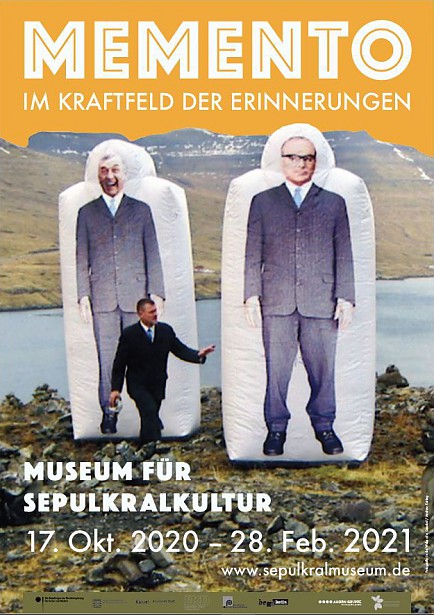
British artist Andrew Kötting takes two 4-meter-high inflatable figures depicting his deceased father and grandfather on a trip around the world, visiting places that were important to his family. Photo: Leila Badblood
© Andrew Kötting / Ella Ziegler
>> Learn more about the "Family Audiobook"
>> Learn more about "Dear Photograph"
>> Download password card "My Digital Heritage" (PDF, German)
Memorabilia. Things that sustain us
When a person dies, the relatives are left in mourning. Nothing is as it was, and everything reminds of the loved one. In his or her eternal absence, his or her current presence becomes most important. Pain and grief become part of the new life, which is now changing, through various strategies or rituals. Even simple everyday objects can be helpful in coping with loss. A father's pocket-knife, which constantly accompanies the son, a watch, jewellery or selected clothes can provide comfort and preserve the memory of a loved one in a special way. Everything is conceivable here.
We encouraged our visitors in during this year's Museums Week to provide such an object, which has given strength, for the exhibition MEMENTO – The Force Field of Memories. We present these things together with their stories told by their owners and caught on video.
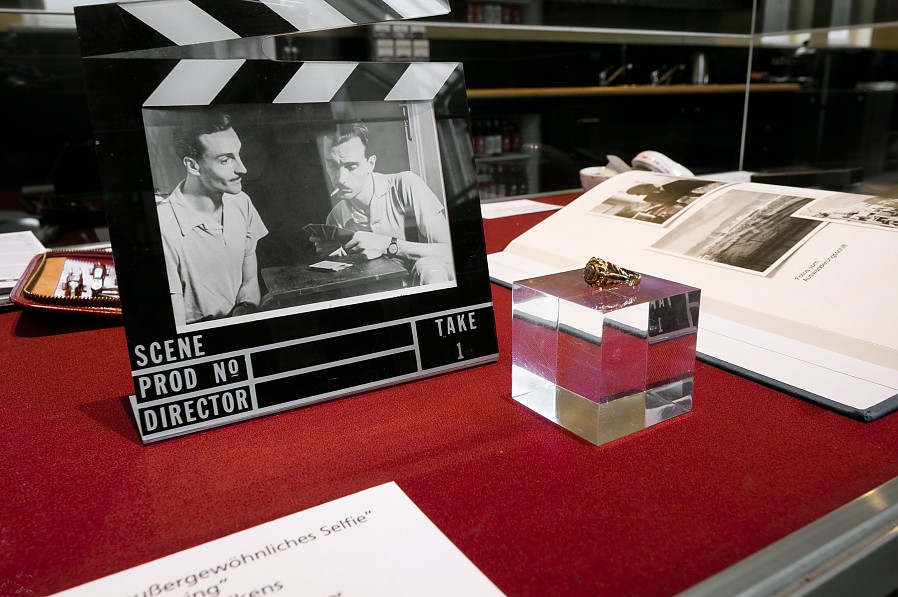
© Museum für Sepulkralkultur, Kassel, Bildarchiv
MEMENTO Digital
"Memento" goes digital
With the current special exhibition MEMENTO – The Force Field of Memories, the Museum for Sepulchral Culture is breaking new ground in times of a global pandemic. The exhibition has been digitized with photographic 360° shots and an inclusive 3D scan and prepared for a virtual tour – barrier-free and accessible online by everyone.
The exhibition rooms can be experienced virtually from the comfort of your own home, using a PC, tablet or smartphone. It is possible to navigate freely through all areas, look around in detail and also read the exhibition texts. Thanks to the commitments of all participating artists even the artistic video contributions and objects are integrated.
The team of curators accompanies the visitors with video statements through the exhibition and thereby deepens individual topics or objects. Director Dr. Dirk Pörschmann and the artist and curator Ella Ziegler (Berlin), but also the internal and external research assistants of the Museum for Sepulchral Culture – Dr. Ulrike Neurath, Gerold Eppler, Tatjana Ahle and Lorenz Widmaier – report on traces and contemporary witnesses, on ancestors and spirits, on memorial rituals and practices or on digital forms of commemoration.
Not only in the emergency times of a pandemic can exhibitions be visited by those who have no opportunity to travel to Kassel. In the future, virtual tours are also planned, but events can also be followed live or as a streaming version in virtual space.
The 3D tour was realized with the company Gekko Brandservices GmbH under the direction of the filmmaker Dirk Leiber. The platform www.museum-virtuell.com has been active since this year and is constantly growing.

Arbeitsgemeinschaft Friedhof und Denkmal e.V.
Zentralinstitut für Sepulkralkultur
Museum für Sepulkralkultur
Weinbergstraße 25–27
D-34117 Kassel | Germany
Tel. +49 (0)561 918 93-0
info@sepulkralmuseum.de



